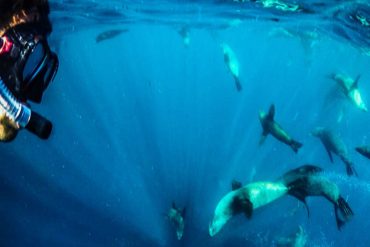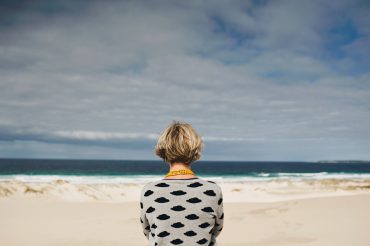Why you’ll love wildlife watching
There are not many places in the world where wildlife is as abundant and accessible as Tasmania’s east coast. Visit a wildlife park, take a guided wildlife tour or enjoy the thrill of a natural encounter in one of our national parks. See fur seals, dolphins and sea eagles on a kayaking tour, encounter Tasmanian devils on Maria Island, and share your campsite with soft, timid wallabies and pademelons. Many Tasmanian animals are nocturnal, with the best viewing times at dusk and dawn.
Where you’ll find it
Maria Island National Park
Wildlife thrives in the protected environment of this island national park. As you explore, you’re likely to encounter kangaroos, wallabies, wombats and Cape Barren Geese here, as well as the endangered, iconic Tasmanian devil. Devils are under threat from the insidious Devil Facial Tumour Disease, but a healthy insurance population has been introduced to the island, and sightings of devils are not uncommon.
On a wildlife tour
Bicheno is a hub for wildlife tours. See Tasmanian devils on the evening Devils in the Dark tour at Bicheno. Visit Natureworld wildlife sanctuary, five minutes’ drive north of Bicheno, to see Tasmanian devils, kangaroos, wallabies, wombats, quolls and birdlife. And, for a glimpse of life below the ocean’s surface, join a 45-minute tour aboard Bicheno’s Glass Bottom Boat (September-April).
Serpentarium Wildlife Park in St Helens is an indoor reptile exhibit, presenting exotic captive bred reptiles, displayed in a quality museum setting. All of their species receive personal attention and the best in husbandry care as they totally love their reptiles! The Serpentarium provides a museum type display of feature reptile exhibits set within a wild and exciting themed environment. Main exhibit enclosures are themed in a naturalistic and eco-friendly custom habitat setting, housing the worlds largest Python species, displayed for fantastic public viewing, education and family experience.
From a beach, boat or kayak
The oceans of the east coast are home to marine mammals and birds as well as fish. Australian fur seas, dolphins, little penguins, sea eagles and albatross are abundant here. Each year, between May and November, humpback and southern right whales can often been seen along the coast, during their annual migration.
Join the three-hour Freycinet Paddle, take a cruise with Freycinet Charters or Wineglass Bay Cruise for opportunities to observe wildlife on the Freycinet Peninsula, or just keep a close eye on the water as you stroll the beach. Set sail with East Coast Cruises to explore Maria Island with experienced locals.
How long will you need?
Opportunities to see wildlife on the east coast can happen naturally as you spend time at the region’s national parks and beaches. You’ll need at least a full day to visit Maria Island National Park (including travel time to and from the island), and guided wildlife tours range from 45 minutes to several hours. Allow a full morning, afternoon or whole day to explore a wildlife park or to take short walks in Freycinet, Mt William or Douglas Apsley national parks.
To help plan your visit, you can check our travel times and driving distances.


